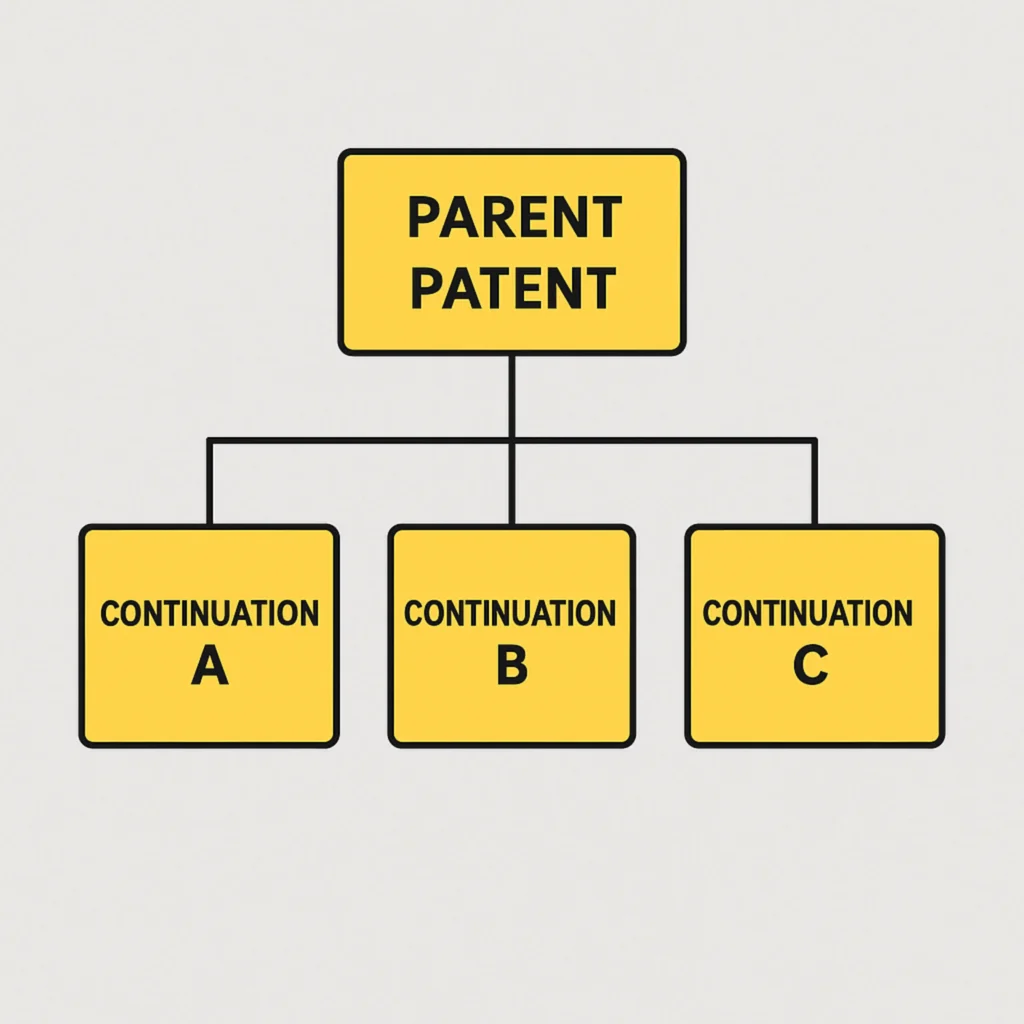A patent is just the beginning. In the world of patents, one of the key strategies for strengthening and expanding legal protection for an invention is Submitting a continuation request (Continuation). This is a powerful tool, but not always understood by inventors and entrepreneurs.
In this article, we will explain what a continuation patent application is, what types exist (Continuation, Divisional, CIP), when they are used, and what their strategic value is – even after the patent has already been filed or approved.
🧠 Why actually file a continuation patent?
In most cases, when a patent application is filed, the main invention and the main claims are presented.
But sometimes:
- Want Protect another variation of the invention
- The patent examiner demanded Split between different inventions (restriction requirement)
- The company discovered another way to implement the invention
- It is necessary Expand the boundaries of protection or Adapt the patent to an emerging market
In such cases, a continuation patent provides an opportunity to file a new application based on the same invention, While maintaining the filing date of the parent application – the priority date.

🧩 Types of follow-up requests
There are three main types of follow-up requests, which differ in their purpose and nature:
- Continuation
New request based on The exact same invention description Like a previous request (parent), but includes Various claims.
Common uses:
- Formulate broader or narrower claims
- Change the wording of the protection to accommodate new development
- Continue the procedure even after the previous application has been accepted
2. Divisional
A new application submitted when the examiner decides that the original application contains More than one invention.
According to the rules, each invention must be split into a separate application.
Common uses:
- When you want to obtain protection for each of the versions presented in the original application
- Maintaining additional patent options without giving them up
3. Continuation-in-Part (CIP)
A request based on a previous request but Adds new information Which did not appear in the original.
Common uses:
- Add improvements or new versions of the invention
- Expand the invention following technological or business developments
⚠️ Please note: The priority date for the part that appears in the original application is retained. The new part will be given priority from the date of submission of the CIP.
⏱ When can a continuation patent be filed?
You can apply for continuation. As long as the previous application is pendingThat is, it has not yet been accepted or has not yet been finally rejected.
Even after the previous application has been accepted as a patent, a follow-up application can be submitted, as long as its processing has not been completed.
⚠️ Submitting a continuation request Must be done on time, Otherwise you will irreversibly lose the ability to do so.
💼 Why is this important for businesses and startups?
Follow-up requests are a strategic tool for building A strong, dynamic and future-proof patent portfolio. Here are some distinct advantages:
1. Expanding protection
By using new claims, it is possible to cover additional aspects of the invention that were not initially included – for example, new uses, additional configurations, or alternative methods.
2. Responding to competitors
If a competitor creatively circumvents the original patent, a continuation application can be filed that includes claims that also cover his method – as long as it is derived from the original description.
3. Negotiation and Licensing
A portfolio that includes follow-on requests allows for flexibility in negotiations with investors, purchasers, or partners – each may be interested in a different angle of the invention.
4. Preserving options for the future
Even if you do not currently need additional claims, an open continuation request leaves room for protection for future versions.
🧭 Practical strategies for using follow-up requests
- "Keep one pending" – Keeping one application active at all times, even after receiving the patent, in case a new invention or a new market develops.
- Split by applications – If the invention has uses in multiple fields (for example, software and medicine), continuation applications can be filed for each field separately.
- Maintaining claims flexibility – You can file a continuation request with very broad claims, and then narrow it down as needed.
🧩 Summary
Follow-on applications are not a "last patent" – but an integral part of the strategic process of building intellectual property assets.
Through them, you can expand, change, and adapt protection according to business and technological developments.
Whether you are a startup discovering a new market, or you want to prepare for upcoming competition – A continuation patent is a tool that can make the difference between a single patent and a smart and dynamic portfolio..



